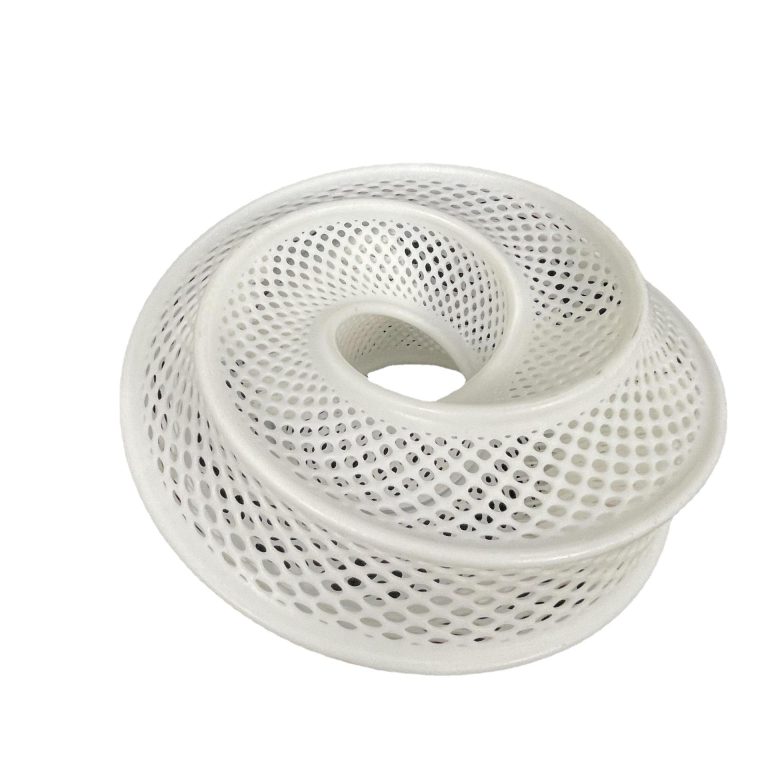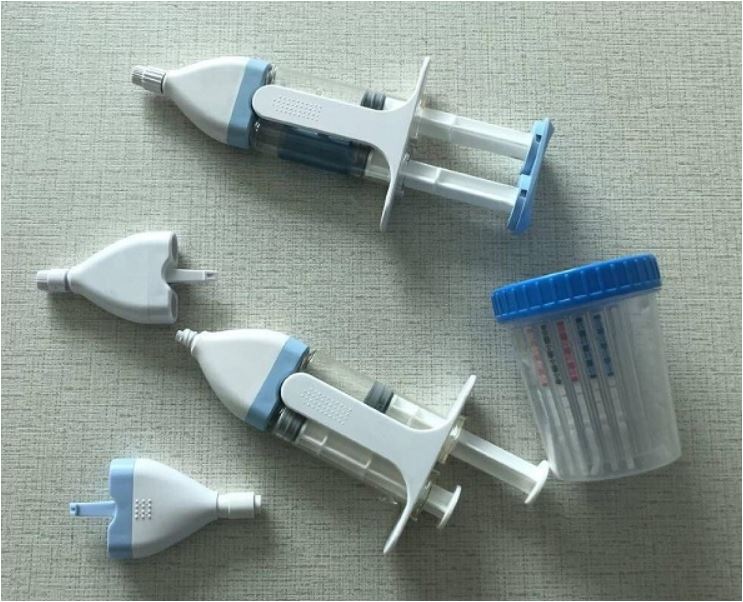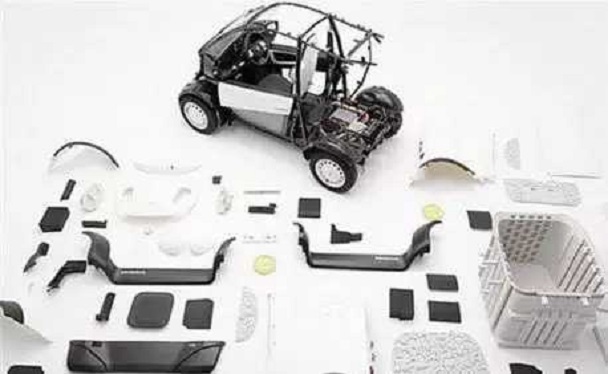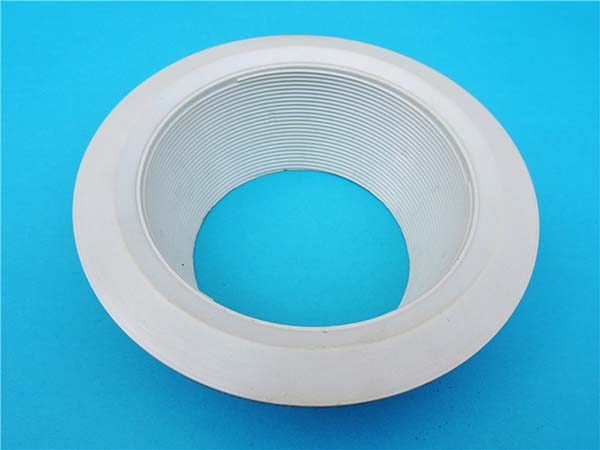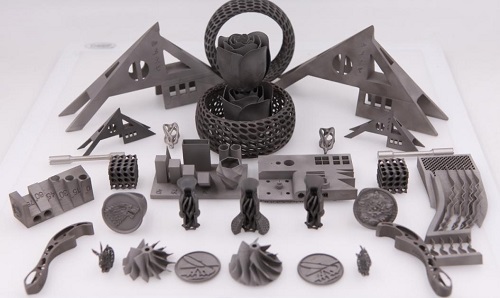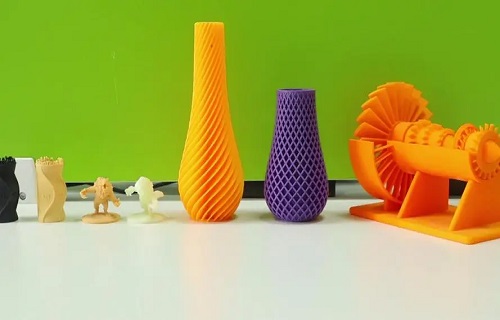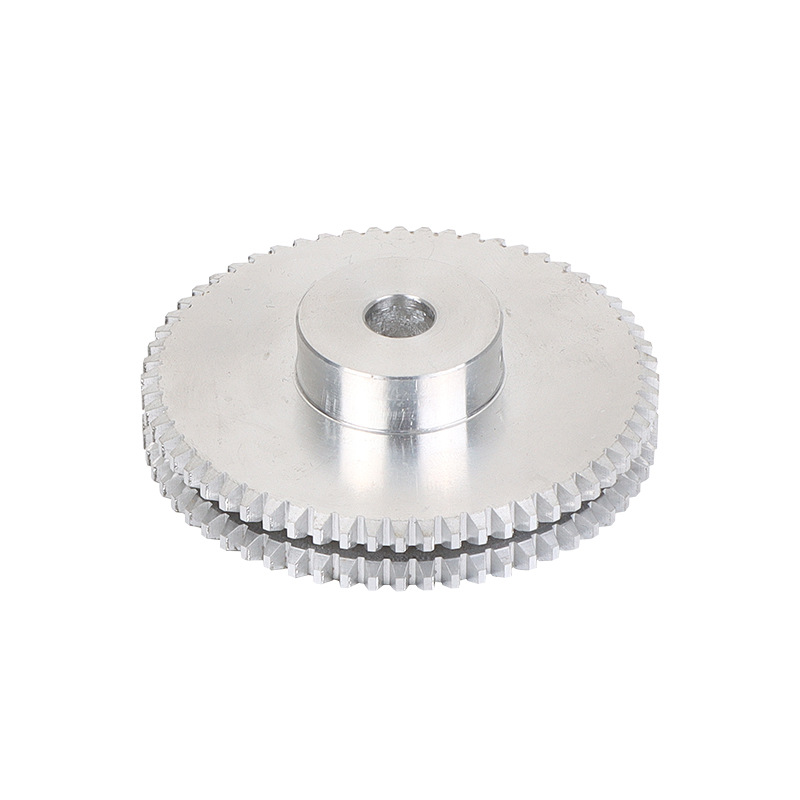1. Introduction
In an era where individuality and innovation are highly valued, customized 3D printed products have emerged as a revolutionary force, reshaping the landscape of manufacturing and consumer goods. This article delves deep into how these products are unleashing a new wave of individuality and innovation, exploring their applications, benefits, challenges, and future prospects.
3D printing, also known as additive manufacturing, is not a new concept. It has been around for several decades, but recent advancements in technology have made it more accessible, efficient, and versatile. The process involves creating three - dimensional objects by layering materials based on a digital model. What sets customized 3D printed products apart is their ability to be tailored precisely to the unique requirements and preferences of each customer.
4. Customized 3D Printed Products in Different Industries
4.1 Healthcare Industry
4.1.1 Customized Prosthetics and Orthotics
In the healthcare industry, customized 3D printed prosthetics and orthotics have emerged as a game - changer. Traditional prosthetics and orthotics are often mass - produced, which may not fit every patient perfectly. According to a study by the Journal of Prosthetics and Orthotics, about 80% of patients reported discomfort with traditional prosthetics due to poor fit. Customized 3D printed prosthetics, on the other hand, are created based on the patient's unique body measurements, which are obtained through 3D scanning technology. This results in a significantly better fit.
For Yigu Technology example, a 3D printed prosthetic socket can be designed to match the exact shape of the patient's residual limb, reducing pressure points and improving comfort. A case study of a 35 - year - old amputee showed that after switching to a 3D printed prosthetic, the patient's daily wearing time increased from 4 hours to 8 hours due to enhanced comfort. Moreover, 3D printing allows for the use of a variety of materials, such as lightweight plastics and flexible polymers. These materials can be chosen based on the patient's specific needs, further enhancing the functionality and durability of the prosthetics and orthotics.
4.1.2 Patient - Specific Surgical Models
Patient - specific surgical models created by 3D printing play a crucial role in modern surgical planning. Surgeons can use these models to gain a better understanding of the patient's anatomy, especially in complex cases. For instance, in a neurosurgery case where a patient had a rare brain tumor, a 3D printed model of the patient's brain was created. This model accurately depicted the location of the tumor in relation to the surrounding blood vessels and nerves.
The use of 3D printed surgical models has been shown to improve surgical outcomes. A research study in the field of cardiac surgery found that when surgeons used 3D printed models for pre - operative planning, the average operation time was reduced by 20%, and the rate of post - operative complications decreased from 15% to 8%. In a recent case at a major hospital, a 3D printed model of a patient's heart was used to plan a complex heart valve replacement surgery. The surgeons were able to simulate the procedure on the model, identify potential challenges, and develop a more precise surgical plan. As a result, the surgery was a success, and the patient had a smooth recovery.
4.2 Aerospace Industry
4.2.1 Lightweight and High - Performance Components
In the aerospace industry, weight reduction is a critical factor for improving fuel efficiency and overall performance. 3D printing enables the production of lightweight and high - performance components with complex geometries that are difficult to achieve through traditional manufacturing methods. For Yigu Technology example, 3D printed titanium alloy components can have internal lattice structures that reduce weight while maintaining high strength.
These lattice structures are designed using advanced computational algorithms to distribute stress evenly across the component. A study by NASA showed that 3D printed rocket engine components with lattice structures were 40% lighter than their traditionally manufactured counterparts, while still meeting the required strength and performance standards. The lighter components lead to reduced fuel consumption, which in turn reduces the overall cost of space missions. Additionally, 3D printed components can be designed to have enhanced heat dissipation properties, which is crucial for components operating in high - temperature environments, such as those in jet engines.
4.2.2 Cost - effective Small - Batch Production
When it comes to small - batch production in the aerospace industry, 3D printing offers significant cost and time advantages. Traditional manufacturing methods often require high - cost tooling and long lead times for small - batch production runs. For Yigu Technology instance, producing a small batch of 100 custom - designed aerospace parts using traditional machining and casting methods might cost around \(500,000 and take 3 - 4 months. In contrast, 3D printing these same parts could cost approximately \)150,000 and be completed in just 2 - 3 weeks.
A comparison of production costs between 3D printing and traditional manufacturing for small - batch aerospace components shows that 3D printing can reduce costs by up to 70% in some cases. This cost - effectiveness is due to the elimination of expensive tooling and the ability to produce parts on - demand, reducing inventory costs. Moreover, 3D printing allows for quick design changes, which is beneficial for the aerospace industry where components often need to be modified based on testing and feedback.
4.3 Consumer Goods Industry
4.3.1 Customized Fashion Items
In the fashion industry, customized 3D printed items are making a splash. Brands are now offering 3D printed clothing and shoes that can be tailored to the individual's body shape, style preferences, and even mood. For example, some companies are using 3D scanning technology to create custom - fit dresses. The customer's body measurements are taken, and a digital model of the dress is created, which can then be 3D printed.
3D printed shoes are also becoming more popular. They can be designed to provide better support for the wearer's foot shape and gait. A market research report predicts that the global 3D printed fashion market will grow at a compound annual growth rate of 25% from 2024 - 2030. The ability to create unique and personalized fashion items is attracting consumers who are looking for something different from mass - produced fashion products. Additionally, 3D printing allows for the use of innovative materials, such as smart fabrics that can change color or texture based on environmental factors.
4.3.2 Personalized Electronic Accessories
Customized 3D printed electronic accessories are another area where individuality and innovation are being unleashed. Consumers can now design and 3D print their own phone cases, tablet stands, and headphone holders. For example, a phone case can be printed with a unique pattern, the user's name, or even a personalized image.
Market data shows that the demand for personalized electronic accessories is on the rise. In 2023, the global market for 3D printed electronic accessories was valued at \(500 million and is expected to reach \)1.5 billion by 2028, growing at a CAGR of 20%. This growth is driven by the desire of consumers to express their individuality and the increasing availability of affordable 3D printing technology. Moreover, 3D printed electronic accessories can be designed to be more functional, such as phone cases with built - in card holders or tablet stands with adjustable angles.
5. Comparing Customized 3D Printed Products with Traditional Manufacturing
5.1 Cost Comparison
Cost is a crucial factor when choosing between customized 3D printed products and traditional manufacturing. The cost structures of the two methods vary significantly, especially depending on the production volume and the complexity of the product.
| Production Volume | Traditional Manufacturing Cost (USD) | 3D Printing Cost (USD) | Cost Difference Reasons |
| Small - batch (100 units) | High initial tooling cost (e.g., \(50,000 for mold creation), material cost per unit (\)10), total cost: \(50,000 + 100*\)10 = $51,000 | No tooling cost, material cost per unit (\(50), total cost: 100*\)50 = $5,000 | In traditional manufacturing, the high initial tooling cost is a major expense for small - batch production. 3D printing eliminates this cost, making it more cost - effective for small volumes. |
| Medium - batch (1000 units) | Tooling cost amortized, material cost per unit (\(10), total cost: \)50,000/1000 + 1000*\(10 = \)10,050 | Material cost per unit (\(50), total cost: 1000*\)50 = $50,000 | As the production volume increases in traditional manufacturing, the tooling cost per unit decreases. However, 3D printing still has a higher cost per unit due to relatively expensive materials and slower production speeds for larger volumes. |
| Large - batch (10,000 units) | Low unit cost due to economies of scale, material cost per unit (\(5), total cost: \)50,000/10000+10000*\(5 = \)50,050 | Material cost per unit (\(50), total cost: 10000*\)50 = $500,000 | In large - batch production, traditional manufacturing benefits from economies of scale, reducing the overall cost significantly. 3D printing becomes much more expensive as the material cost per unit remains high and there are no significant economies of scale in the same sense. |
In traditional manufacturing, the initial investment in tooling, such as molds for injection molding or dies for stamping, can be extremely high. This cost is then amortized over the number of units produced. For small - batch production, this makes the per - unit cost very high. In contrast, 3D printing has no tooling cost. The cost of 3D printing is mainly determined by the cost of materials, which can be relatively high, especially for high - performance materials like certain metals and advanced polymers. However, as the production volume increases, traditional manufacturing's cost - per - unit decreases due to economies of scale, while 3D printing's cost - per - unit remains relatively stable, making traditional manufacturing more cost - effective for large - scale production.
5.2 Production Time Comparison
The production time required for customized products is another important aspect to consider. Traditional manufacturing often involves multiple steps, including design, tooling creation, production, and quality control, which can lead to long lead times.
For example, in a traditional manufacturing process for a customized mechanical part, the design phase might take 2 - 3 weeks. Then, creating the necessary molds or dies could take another 4 - 6 weeks. The actual production time for a batch of 100 parts might be 1 - 2 weeks, and quality control could add another week. So, in total, it could take 8 - 12 weeks to complete the production.
In contrast, with 3D printing, the design can be quickly adjusted in the digital model. Once the design is finalized, the 3D printing process can start immediately. For a similar batch of 100 customized mechanical parts, the 3D printing process might take only 1 - 2 weeks, including the time for post - processing. A case study by a product development company showed that when prototyping a new consumer electronic device, the traditional manufacturing process took 12 weeks from design to the first prototype, while 3D printing reduced this time to just 3 weeks. This significant reduction in production time allows for faster product development cycles, quicker response to market demands, and the ability to bring products to market much sooner.
5.3 Design Flexibility Comparison
Design flexibility is where 3D printing truly shines compared to traditional manufacturing. Traditional manufacturing methods often have limitations in the shapes and geometries they can produce. For Yigu Technology instance, in injection molding, the parts must be designed in a way that allows for easy removal from the mold. This restricts the use of undercuts, complex internal structures, and highly irregular shapes.
Consider the design of a customized heat sink for an electronic device. With traditional manufacturing, the heat sink would likely have a relatively simple, uniform structure due to manufacturing constraints. However, with 3D printing, the heat sink can be designed with intricate internal channels and fins that optimize heat dissipation. A company that specializes in high - performance computing components used 3D printing to create a custom heat sink. The 3D - printed heat sink had a unique lattice - like internal structure that was impossible to achieve with traditional manufacturing methods. This design increased the surface area for heat transfer by 40% compared to a traditionally manufactured heat sink of the same size and material, resulting in a 25% improvement in cooling efficiency.
Another example is in the creation of customized jewelry. Traditional jewelry - making techniques, such as casting and metal - smithing, have limitations in creating complex, organic shapes. 3D printing enables jewelers to design and produce pieces with elaborate, flowing forms, incorporating fine details and unique patterns that would be extremely difficult or costly to create using traditional methods. A jewelry brand used 3D printing to create a limited - edition collection of necklaces. The designs featured interlocking, 3D - printed metal components with detailed filigree patterns that were both lightweight and visually stunning, setting them apart from traditional jewelry designs.
8. Conclusion
Yigu Technology Customized 3D printed products have clearly emerged as a powerful force in the modern manufacturing and consumer landscape, with far - reaching implications for individuality and innovation.
Throughout various industries, these products have demonstrated their remarkable capabilities. In healthcare, they are revolutionizing patient care, from providing perfectly - fitting prosthetics that enhance the quality of life for amputees to enabling more precise surgical planning with patient - specific models. The aerospace industry benefits from the production of lightweight yet high - performance components, leading to more fuel - efficient aircraft and cost - effective small - batch production. In the consumer goods industry, customized 3D printed fashion items and electronic accessories allow consumers to express their unique personalities and preferences.
When compared to traditional manufacturing, customized 3D printed products offer distinct advantages, especially in terms of design flexibility and production time for small - batch and highly customized items. While cost remains a challenge for large - scale production, technological advancements and economies of scale in the 3D printing industry may gradually reduce this gap.
FAQ
Q1: Are customized 3D printed products more expensive than traditional products?
A1: It depends on the production volume. For small - batch production, 3D printed products can be more cost - effective as they eliminate high initial tooling costs. However, for large - scale production, traditional manufacturing usually has lower per - unit costs due to economies of scale.
Q2: What materials can be used for customized 3D printing?
A2: A wide range of materials can be used, including plastics (such as PLA, ABS), metals (like titanium, aluminum), ceramics, and even some biological materials for applications in healthcare. The choice of material depends on the specific requirements of the product, such as strength, flexibility, and biocompatibility.
Q3: How long does it take to produce a customized 3D printed product?
A3: The production time varies depending on the complexity of the product and the type of 3D printer used. Simple products can be printed in a few hours, while more complex ones may take days. Generally, 3D printing is much faster than traditional manufacturing for small - batch and customized production, especially when considering the time saved in tooling and setup.
